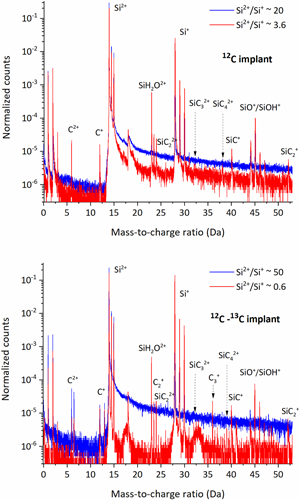Article contents
Composition of Carbon Clusters in Implanted Silicon Using Atom Probe Tomography
Published online by Cambridge University Press: 21 September 2021
Abstract

Atom probe tomography was employed to observe and derive the composition of carbon clusters in implanted silicon. This value, which is of interest to the microelectronic industry when considering ion implantation defects, was estimated not to exceed 2 at%. This measurement has been done by fitting the distribution of first nearest neighbor distances between monoatomic carbon ions (C+ and C2+). Carbon quantification has been considerably improved through the detection of molecular ions, using lower electric field conditions as well as equal proportions of 12C and 13C. In these conditions and using another quantification method, we have shown that the carbon content in clusters approaches 50 at%. This result very likely indicates that clusters are nuclei of the SiC phase.
- Type
- Development and Computation
- Information
- Copyright
- Copyright © The Author(s), 2021. Published by Cambridge University Press on behalf of the Microscopy Society of America
References
- 1
- Cited by



